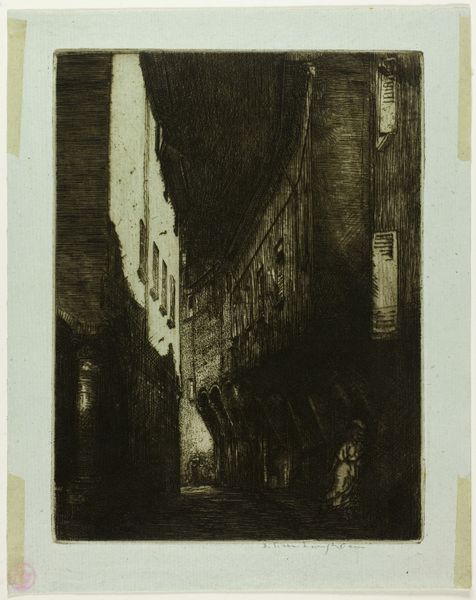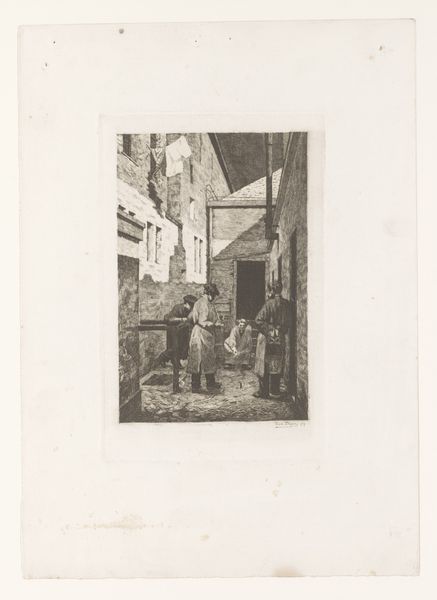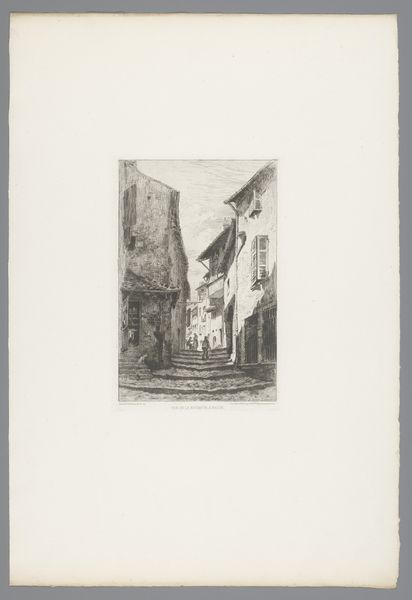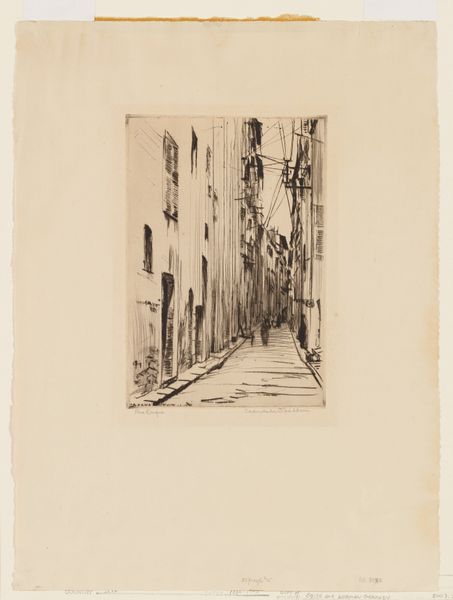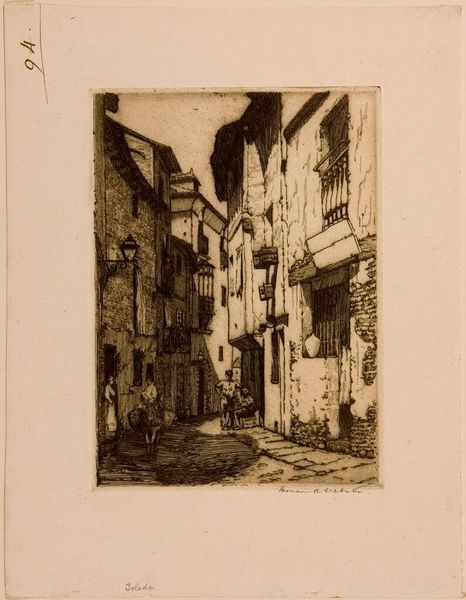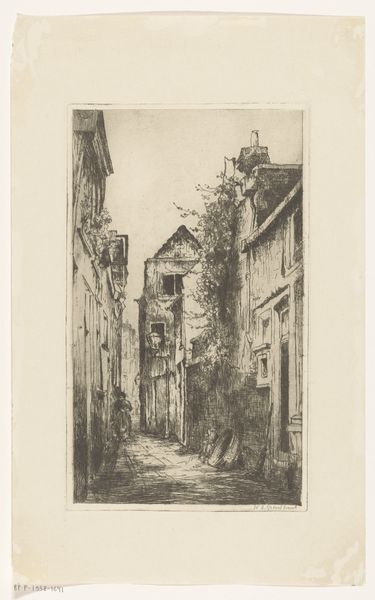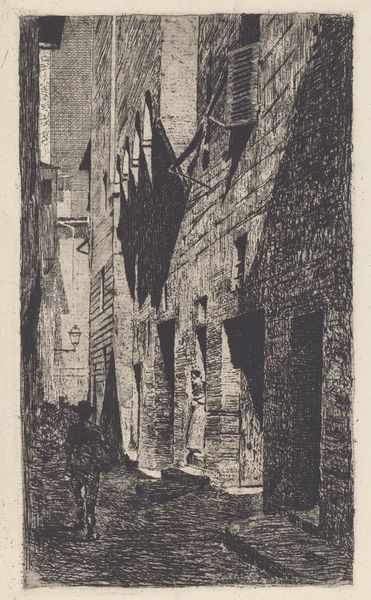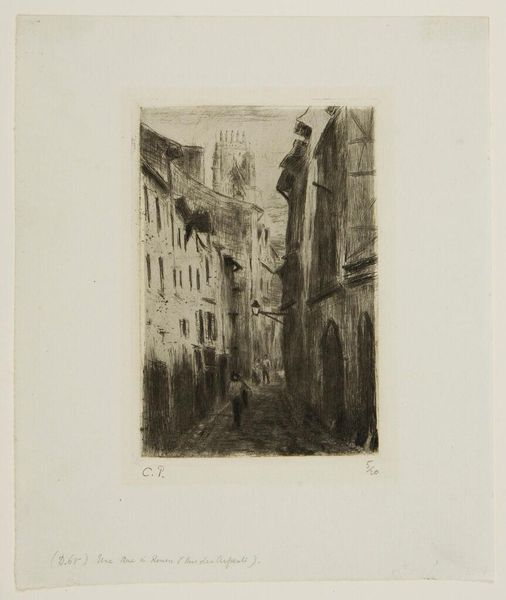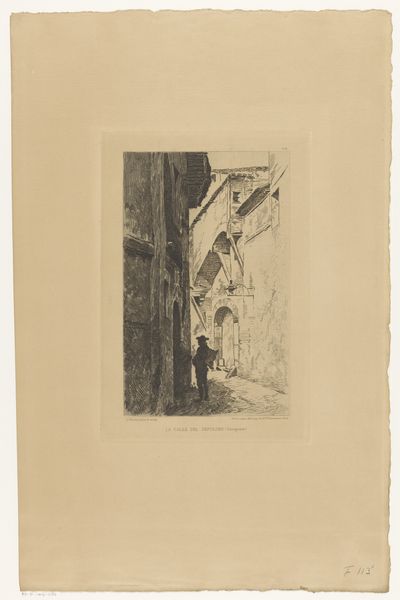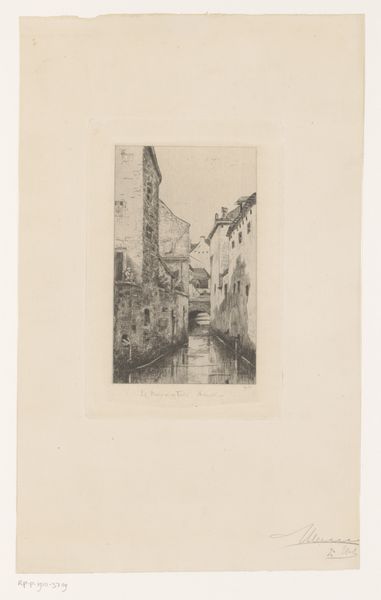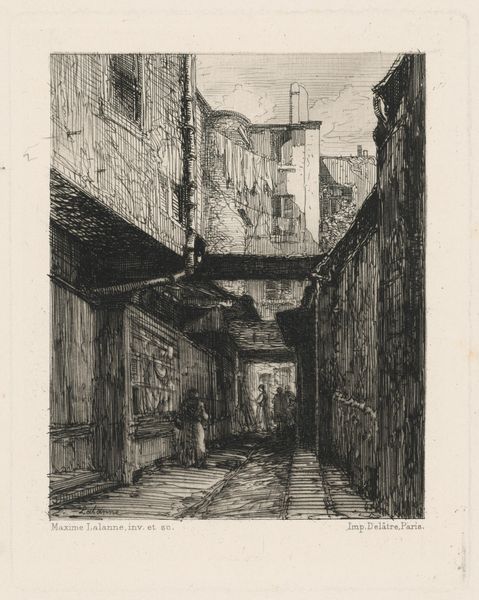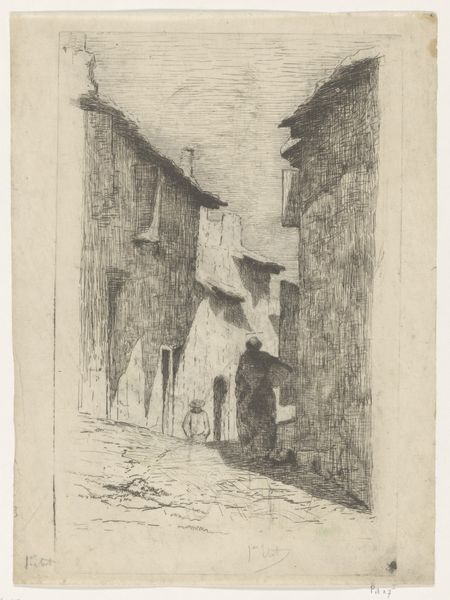
drawing, print, etching, paper
#
drawing
# print
#
etching
#
landscape
#
etching
#
paper
#
cityscape
#
realism
Dimensions: 373 × 238 mm (image/plate); 606 × 415 mm (sheet)
Copyright: Public Domain
Editor: Here we have Telemaco Signorini's "Casa di Dante da Castiglione," created in 1886, an etching on paper. It has a wonderful, almost dreamlike quality with its contrasted light and shadow in the narrow street. What do you see in this piece? Curator: I see the intersection of material reality and social history, etched, literally, onto the paper. Consider the labor involved in quarrying and shaping those stones, the sheer effort of constructing those buildings. The shadows themselves are a testament to the material density, the built environment shaping light and life within. Editor: So, you're less focused on the depiction of Dante’s house and more on the materials that comprise the surrounding city? Curator: Precisely. This image speaks to me of class, of the lives sustained and constrained by those stone walls. Signorini's etching emphasizes the density of the city itself—its physical presence. The buildings are not mere background, but the very fabric of the social reality. The etching technique, with its repetitive, manual process mirrors that idea of labor. Editor: That makes sense. It also gives me a different appreciation for the shadows themselves; how the city shapes our physical existence. How different classes experience them. Curator: Think of the copper plate, the acid, the press. These were instruments of reproduction, bringing this scene—and, implicitly, the social conditions it represents—to a wider audience. Consider this artwork a product, meant to circulate and create dialogues and possibly instigate critique about wealth distribution in urban environments. Editor: That adds so much depth to how I see this piece. The material processes become part of the story. I now appreciate this print beyond its mere image. Curator: Absolutely. Seeing art through a materialist lens illuminates its connection to production, consumption, and the very structures that shape our world.
Comments
No comments
Be the first to comment and join the conversation on the ultimate creative platform.

